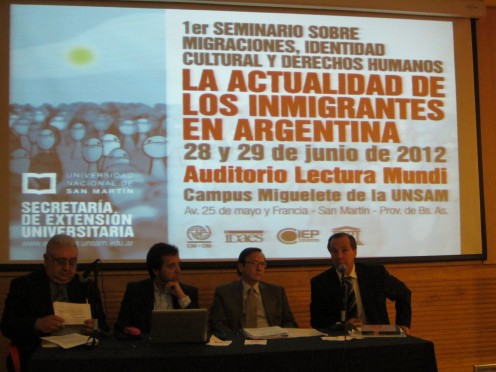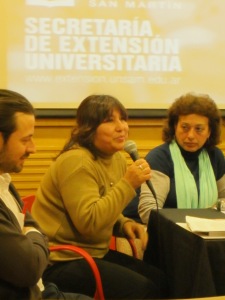Benedict Anderson, best known as the author of Imagined Communities, asserts that newspapers can provide the “technical means for ‘re-presenting’ the kind of imagined community” that an immigrant community has created – in terms of my project, that the Bolivian community has created in Buenos Aires. Therefore, one of the facets of my research is to analyze the newspapers that are created for and by the Bolivian community to determine how they cover and describe sports. However, as most things tend to happen, this hasn’t gone exactly how I had planned. (Foreshadowing: it’s been better!)
First, I came to Buenos Aires with a list of about six Bolivian newspapers that I had found by scouring the web for mentions of them (as many don’t have an online presence). Upon arriving and speaking with Dr. Manuel Cervantes, he informed me that all but two of them were out of business. Luckily, he just so happened to be on the editorial board of one of those two (funny how these connections work!) so he set me up with a meeting with another editor. A few days before that interview, I googled Bolivia Unida and came up with not only their website, but their facebook page. The most recent post immediately caught my attention – there was going to be an academic conference at the Universidad Nacional de San Martin entitled “Seminar about Migrations, Cultural Identity, and Human Rights: The Actuality of Immigrants in Argentina.” Oh hey! That’s precisely what I’m looking at! I scrambled to fill out the registration form (this is around 11pm on Wednesday night, and the conference was on Friday) and prepared myself for my first international conference.

Ruben Giustinani, Argentina national senator, speaking at the Seminario sobre Migraciones, Identidad Cultural, y Derechos Humanos
I arrived at the conference unsure of what to expect. I found it was held in a small auditorium that seated maybe 80 – 100 people – and was surprised to see that at times, there was standing room only! The day was broken into four sections: “Migration and Cultural Identity,” “Migration Policy,” “Migrations and Human Rights,” and “The Voice of the Migrants.” Each section had a panel of speakers ranging from Alejandro Grimson, a professor of anthropology whose work I had read extensively before coming here; Ruben Giustiniani, an Argentine senator; and Martin Arias Duval, the Director Nacional de Migraciones.
As the question of migration in Argentina largely focuses on the Bolivian, Paraguayan, and Peruvian populations, this conference was a fantastic opportunity to listen to (and tape record!) some of the brightest minds from a variety of fields talking about the subject. Without going into detail about what each panel discussed, which would make this post the size of a short novel, I’ll just end this section with a quotation that Alejandro Grimson used to close the conference: “No habria migracion si no habria desigualdad.” There wouldn’t be migration if there weren’t inequality. Statistically speaking, those who choose to migrate for curiosity or love aren’t even a blip on the screen of those who migrate because their home country doesn’t offer enough economic opportunity. It brought home the concept that it is imperative that one understands migration within this greater context.
The week after the conference, I met with Ricardo Calderon of Bolivia Unida. Their website hasn’t been updated in over a year, but they have a current facebook account. I was curious about the ways in which they chose to report on sports to the Bolivian community (do they focus on Argentine teams? Bolivian teams? Professional level? Community level?).
I was surprised, then, when the conversation took a much different turn: Ricardo made it clear that he saw sport as an enjoyable past time for the Bolivian community, but that he believed there were much more important things to talk about in the paper than sports. The newspaper is seen as a vehicle for discussing and problematizing the issues within the community, and in his opinion, sport doesn’t play into that too much. He did give me nine back issues of the newspaper, however, and the penultimate page of each is all about sports. I’m bringing the papers back home to complete better and more detailed analysis upon arriving in New York.
The point of this seemingly jumbled together mix of activities? It’s been through one of my initial contacts, Dr. Manuel Cervantes at FUNCRUSUR, that I was able to meet with the editor of Bolivia Unida, and through my search for information about Bolivia Unida that I found out about the very pertinent conference I attended. Once again, the links in my chain-of-awesome-contacts are coming through for me!
Posted by Amanda Tollefson – MA Candidate at CLACS at NYU

